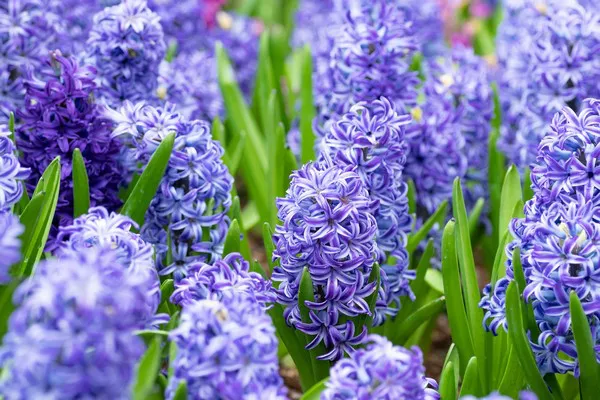Lavender, a symbol of serenity and beauty, has captivated hearts for centuries with its delicate blooms and soothing fragrance. The Lavandula genus, a member of the mint family Lamiaceae, encompasses a range of species, each with its unique appearance and characteristics. From its iconic violet-blue hues to its therapeutic properties, this article delves into the captivating world of lavender flowers, exploring their visual attributes, varieties, cultivation, and cultural significance.
The Visual Splendor of Lavender Flowers: A Kaleidoscope of Hues
Lavender flowers are renowned for their distinctive color palette, primarily ranging from pale lilac to deep violet-blue. The blossoms are characterized by slender, elongated petals that give them an elegant and elongated appearance. The intricate and asymmetrical arrangement of petals around the flower’s central axis adds to its visual allure.
Varied Species and Their Unique Traits
1. English Lavender (Lavandula angustifolia): Known for its classic fragrance and rich violet-blue blossoms, English lavender stands as one of the most recognized species. Its compact flower spikes feature multiple blooms, creating a dense and picturesque display.
2. French Lavender (Lavandula stoechas): French lavender, identifiable by its distinctive “rabbit ear” bracts on top of each flower spike, boasts a vibrant purple hue. This species often has a more pronounced and musky scent.
3. Spanish Lavender (Lavandula stoechas): With its tufted petals and showy bracts, Spanish lavender displays a captivating aesthetic. Its petals extend upwards, creating a unique and arresting visual effect.
4. Lavandin (Lavandula x intermedia): A hybrid of English and spike lavender, lavandin combines the best of both species. It offers larger and more abundant flower spikes with a spectrum of colors, including shades of purple, blue, and even white.
Cultivation and Ideal Growing Conditions
1. Sunlight and Soil: Lavender thrives in full sunlight, requiring at least six to eight hours of direct sunlight each day. Well-draining soil with a slightly alkaline to neutral pH is essential to prevent root rot.
2. Watering: While lavender is drought-tolerant once established, it requires regular watering during its initial growth phase. After that, it’s best to water sparingly to mimic its native Mediterranean environment.
3. Pruning: Regular pruning is crucial to maintain the plant’s shape, encourage new growth, and prevent the development of woody stems. Pruning is best done after the flowering season.
4. Harvesting: To harness the aromatic benefits of lavender, harvest the flowers just before they are fully open. Bundle the stems and hang them upside down in a dry, well-ventilated area to dry.
Cultural and Symbolic Significance of Lavender
1. Aromatic and Therapeutic Uses: Lavender’s fragrance transcends mere aesthetics. Its essential oil is renowned for its therapeutic properties, promoting relaxation, stress relief, and improved sleep quality.
2. Culinary Delights: Beyond its ornamental and aromatic aspects, lavender is also used in culinary applications. It lends a subtle floral and herbaceous flavor to dishes, desserts, and beverages.
3. Medicinal Traditions: Lavender has a long history of use in traditional medicine for its potential anti-inflammatory, antiseptic, and analgesic properties.
4. Cultural Symbolism: Lavender is often associated with qualities such as purity, calmness, and devotion. Its timeless appeal has led to its use in weddings, perfumes, and crafts.
Lavender in Art and Aesthetics
1. Artistic Inspiration: Lavender’s allure has inspired artists throughout history. Its gentle colors and graceful form have been depicted in paintings, photographs, and various forms of creative expression.
2. Gardens and Landscaping: Lavender’s visual charm extends to gardens and landscapes. Its presence adds a touch of elegance and natural beauty, making it a favored choice for both formal and informal settings.
Lavender Conservation and Preservation
1. Biodiversity: As biodiversity faces challenges globally, conserving native lavender species and their habitats becomes crucial. Efforts are underway to protect these plants in their natural environments.
2. Cultivation Practices: Sustainable cultivation practices are essential to maintain the health and vitality of lavender crops. Organic farming methods and reduced pesticide use contribute to the longevity of lavender fields.
Conclusion
Lavender’s enchanting beauty and multi-faceted significance have ensured its place in human culture for generations. From its delicate petals to its soothing fragrance, lavender continues to inspire and captivate individuals across the world. Whether adorning gardens, gracing culinary creations, or offering therapeutic benefits, the lavender flower remains an emblem of grace, tranquility, and enduring allure. As we immerse ourselves in its aesthetics and essence, we are reminded of nature’s ability to touch our senses and hearts in profound and meaningful ways.


